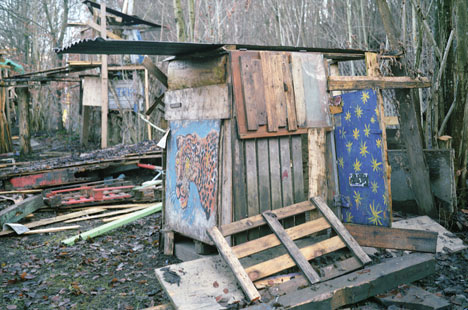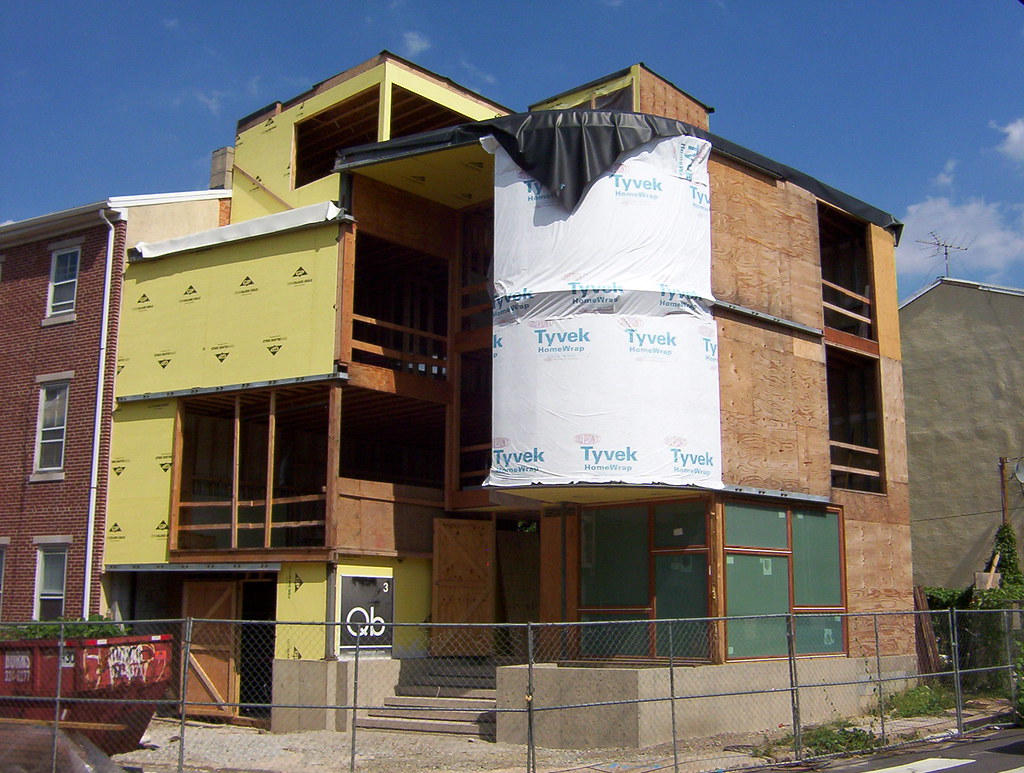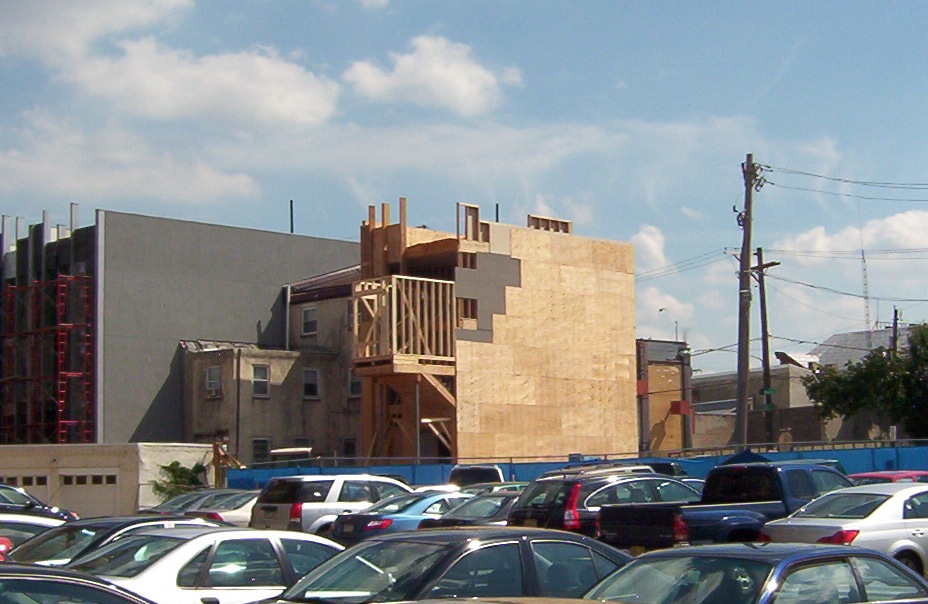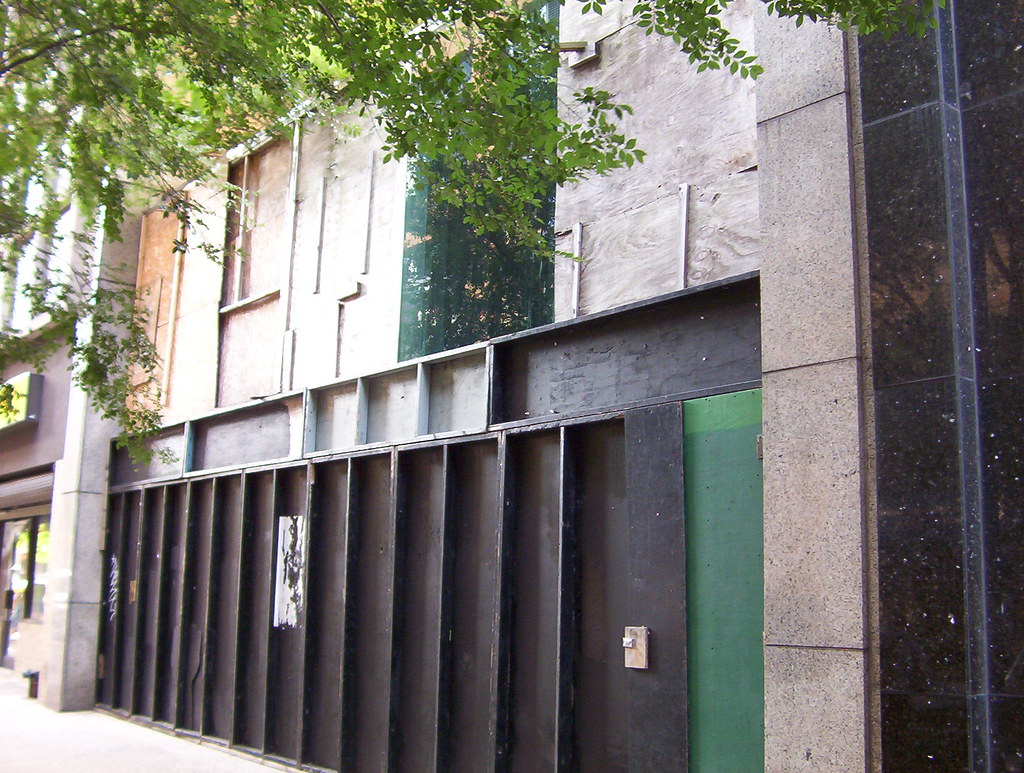Some notes for the Architecture Department at the Philadelphia Institute for Advanced Study, in conjunction with Architecture With/Out Architects.
I.
Architectural theorists rarely grasp the significance of skateboarding— at least not in regards to the field and art of architecture. Skateboarding is possibly the sharpest exemplar of transformation and intimacy in architectural experience. A gleaming gem as far as agency-within-structure goes.
On numerous occasions, I’ve attempted in vain to persuade budding architects that, along with themselves, streetskaters are the other great horde of architectural fetishists. The fetish is slightly different in aspect but not in intensity. Perspectivally, architects are generally schooled to gaze upward, and cultivate an awe of form. Skateboarders remain at eye-level, street-level, on the plane of human actions, in a manner more assault than awe. Architects strive to behold totalities; skaters fixate, on smaller parts— they look closer, at details and textures and otherwise unremarkable typologies. Skaters are the sensualists, the kinesthetic lovers of space and form.
The real conceptual difference, however, comes with how they give meaning to structures— to buildings, parks, plazas, stairwells, and Holiday Inns in disrepair. Architects typically interpret structures through design, intent, expression, or history— that is, everything prior to completion. Streetskaters act on a principle of use, misuse, transformation, strong misreading— everything following the completion of the structure. The post-production. And this relation to form defines their relationship— which can often be at odds. There may be tensions between, on one hand, intents and purposes and, on the other, the actions that ignore, undermine or negate the hopes of the blueprint.
During undergrad, I had a number of friends in the architecture school. One day, they were handed a peculiar assignment: to design an executive plaza conducive for skateboarding. Quite naturally, they filled their designs with huge, smooth ramps and bowls, and basically lifted the general shape of a Vans pay-to-skate megapark.
However, if any of them understood our shared secret— the deeply transformative nature of skateboarding— the winning design would have been— surprise— an ordinary executive plaza, indistinguishable from any other, awaiting skaters to anoint them with unforeseen meanings.
Bernard Tschumi, the former dean of the Colombia Graduate School of Architecture, was among the first to push the idea that architecture is determined as much by events and actions— by the ex-post-facto programs of the agent, happening within the structure— as it is by the intents and purposes of the blueprint, of the ordained usages of the design. A cathedral may breathe numinosity, inspire meditation on the divine. At the end of the day, though, a cathedral becomes a house of God through worship and ablution, through ritual, more than anything truly fixed in the form.
Of course, edifices can be conducive or cumbersome for certain actions. Executive plazas are usually deliciously conducive as skate-terrain. Likewise, the New York public library would be an awkward locale for the World Cup. Ultimately, though, form and concrete cannot dictate their own use, nor ordain their own purpose. It is imposed from without. And, most importantly, there is always some clever, inspired set of actions or events that can fundamentally undermine, détourne, or capsize the prescribed program of any piece of architecture. Cathedral, library, or otherwise.
For Tschumi, this questioning of architecture was tantamount to questioning those forces that lay “purpose” over top of forms. These programs were imposed from without, culturally and politically, by power-structures, by state, by money, by unexamined cultural practices and traditions— including those within the canon of architecture itself. Tschumi took on assumptions that were, quite literally, set in stone.
Tschumi is considered a deconstructionist architect of sorts— someone who brought Derridean insights to the dualisms and presumptions of architecture. Being post-structuralist to the literal structures of architecture. But as much as he was directly inspired by Derrida, much also came from the radical ethos in which Tschumi had waded in previous days. I’m thinking in particular of French Marxists like Henri Lefebvre, of The Production of Space, or similarly, the situationist Neo-Babylonians like Raoul Vaneigem or Constant Nieuwenhuis. They recognized how power determined purpose within the urban environment; power, to their mind, articulated by the contours of spectacular capitalism. They desperately attempted to devise tactics that could override these dictates, override, for instance, Le Courbousier’s Plan Voisin. Or, the Hausmannization of Paris: the Roman Imperial visibility and control offered by its axial symmetry and panoptic boulevards. Yielding what? Easy— a plan yielding no surprises.

Tschumi also caught the situationist knack for sloganeering. In order to formulate disjunction, and event anointing space and form with meaning, he came up with such phrases as “polevaulting in a cathedral” or “a football player skating through a battle,” among other non-sequiturs. Examples that required more squinting than our example of skateboarding, which was only in its nascent stages at the time.
I’ll be frank: streetskating is, I think, the most successful and contagious form of urban détournement, re-appropriation, and transformative action that we have— a recent historical windfall for Tschumi that validates his theories more than any of his actual designs. Take our executive plaza for instance: a crappy and generic marble plaza in the center of any given American city. Its objects are encompassed with a very straightforward program. Benches are for sitting. Stairs are there to blend heights into a smooth, walkable continuum. Handrails ensure the safety of our passage. Corporate sculpture, for visual enrichment and relaxation. The whole of the plaza, for lunchbreaks and the public conveyance of financial sturdiness. And what is the skateboarder response?

They roll in and apply a new layer of meaning and mythopoetics over these existing fixtures, that beyond a doubt, fuck with and over the original intentions of the design. Benches, which were intended for stasis, become the loci of noseblunt slides and highspeed k-grinds. Staircases are submitted to fakie ollies or kickflips, rendering the steps themselves pointless.
With handrails— originally for security— skaters have reserved perhaps the single most dangerous activities. Eric Koston’s one-footed nose grinds, or Bastien Salabanzi’s kickflips to disaster. Security guards and building managers respond by bolting in places counter-skate measures: what are called “skatestoppers.” And it’s here that skateboarding crowns its highest genius, when skaters like Jerry Hsu dare to skate skatestoppers. To skate an object whose only purpose was to prevent skating: absolute, total, and blasphemous negation.
So skateboarding was not only the most successful species of action-determining-meaning, or of the illicit over authorative structure, it was also a great model for the production of desire— white-hot desire from otherwise neutral things and forms and debris. Again, this is different from traditional architectural appreciation, in that it doesn’t wait or pine for great canonical works to deliver beauty in its surroundings. It poeticizes the other 99 percent of the expanse— the Wawas and sidewalks and Market Streets. It creates its desire ex nihilo. From nothings or very little somethings.
A shitty burnt-out shell of a gasoline station becomes, under the transformative play of a skateboard, a thing of true beauty. This alters our sense of Landmark considerably. We daydream of Huntington Beach Highschool, Embarcadero in San Franscisco, City Hall in Philadelphia. We no longer speak of “architecture” honorifically— since through strong misreading everything becomes susceptible to sharp poeticization, as a skateboard field.
Skateboarding is the greatest poeticizations of space, a model for countless other such poeticizations. It’s not just that that skateboarding came up with things to do; it invented a new language to make its poetics possible. Backside, frontside, switch, ollie, noseblunt, casper, primo, hardflip, kinked— a vocabulary of action that allows us to differentiate space and our “body-centric formulations” and break up indifference to its particulars. Also, a new sense for the typology of common objects as well— benches, handrails, stairs, mailboxes, curbs, trees, loading docks— that elicit a whole new set of poetic responses. Any transformative model of action will require, I bet, a vocabulary of actions and a reclassification of the fixtures of urban space.
This wisdom is commonplace among skateboarders, but rarer among theorists. The first I heard was from a recitation by the apocryphal “Dr. Eugene Mandar” in the videomanifesto of streetskating, Public Domain by Powell and Peralta.
“Here, a clandestine observation: We see a roving band of skateboard cultists, practicing obscure urban rituals amidst cultural detritus of an abandoned manufacturing facility. How is it that these cultists can derive such pleasure from the seemingly insignificant, the debris of modern society?What is the strange, profound attraction that this rectangular piece of concrete holds for them?
Do we now observe the rites of passage of a newly emerging civilization?
America’s civic engineers, confronted by a pristine natural environment, have designed their cities, their centers of commerce, for that most efficient of all applications: non-usage.
These young urbanites have discovered uncharted activities within the sterile surroundings of the environment’s original design.
And has not this trend continued into the residential neighborhood? Why, even into the local schoolyard, where even the simplest activity has been preplanned, tested, surveyed, and constructed for singular purposes…Preordained usage.
Yet our cultists, have created their own usage, their own… interpretation.”
—A strip of wisdom that nearly every skateboarder in the world watched at one time or another— including the one theorist that has taken skateboarding seriously: Iain Borden, of the Bartlett School of Architecture. After reading his work, I realized that any skateboarding architect or architecturally-inclined skater would arrive at many of the same conclusions, in some layer of his heart.
From “The Performative Critique of the City”—
“Architecture (following here Lefebvre’s body-centric formulations) “reproduces itself within those who use the space in question, within their lived experience.”(12) This occurs in skateboarding through architecture being encountered in relation to height, tactility, transition, slipperiness, roughness, damage to skin on touching, damage to body from a fall, angle and verticality, sequencing, drops (stairs and ramps), kinks and shape (hand-rails), profiles (edges), materials, lengths and so on. And only a very small part of the architecture is used — the “building” for a skater only an extracted edit of its total existence.”"Skateboarding here resists the standardisation and repetition of the city as a serial production of building types, functions and discrete objects; it decentres building-objects in time and space in order to recompose them as a strung-out yet newly synchronous arrangement. Thus while many conceive of cities as comprehensive urban plans, monuments or grands projets, skateboarding suggests that cities can be thought of as series of micro-spaces. Consequently, architecture is seen to lie beyond the province of the architect and is thrown instead into the turbulent nexus of reproduction”
Custodians see property, rent, insurance, owners, intent, and regulation— the net of economic relations, and cannot begin to imagine what skaters are thinking. But what about the skaters? They are just as frustrated. Or more so. Here, finally, we have an easy-bake recipe for human happiness, a way of finding a Sublime in the parking lot of a Best Buy, and what do we do? We hesitate. We banish. We do our best to muffle this eruption of poetic being because of some waxy, dark residue on the edge of a planter. Not to mention, this banishment of poetics for “insurance purposes” says some pretty dark shit about our arrangements in the Modern West. The net of economic relations has grown so tight that we are no longer permitted to endanger ourselves.
Incidentally, architecture terminology often refer to an experiential approach to architecture, “the labyrinth of experience versus the pyramid of concept” as being “phenomenological.” Skateboarding goes one better, more strictly phenomenological, in the Husserlian sense of epoche or the bracketing of presumptions. Or as Borden says:
Skateboarding is, then, at one level an aesthetic rather than ethical practice, using the “formants” at its disposal to create an alternative reality. Skateboarders analyze architecture not for historical, symbolic or authorial content but for how surfaces present themselves as skateable surfaces. This is what Thrasher skateboard magazine calls the “skater’s eye.”
Though, granted, skaters do not so much bracket as replace presumptions, but still…
Yet Borden goes further than I ever had in seeing, distinguishing, and demonstrating the ideological tensions piqued by the act of skateboarding. Ideological assumptions about use and misuse, property and public space, use value and exchange value, work and play— especially since skateboarding has become “a totalizing culture,” offending older, common presumptions in phalanx. And not just ordinary high-capitalist ideology… He goes on to say that “through such compositions, skateboarding brings back that which strictly economic Marxism evacuates— it brings back the dream, imaginary and ‘poetic being.”
Another, perhaps better touchstone philosopher would be Michel De Certeau, whose The Practice of Everyday Life lays down a distinction between externally-imposed, over-determined, capitalizing strategy and ground-level, unseen and unrecognized, democratic, transformative tactics, performed in the sphere of everyday life. Every word that De Certeau spills on tactics seems to describe skateboarding to the last nut, more fitting even than his examples in Brazilian popular culture.
A tactic insinuates itself into the other’s place, fragmentarily, without taking it over in its entirety, without being able to keep it at a distance. In has at its disposal no base where it can capitalize on its advantages, prepare its expansions, and secure independence with respect to circumstances. The “proper” is a victory of space over time. On the contrary, because it does not have a place, a tactic depends on time— it is always on the watch for opportunities that must be seized “on the wing.” Whatever it wins it does not keep. It must constantly manipulate events in order to turn them into opportunities.”
Quick-moving, tricky, democratically-developed, in the stream of experience, using old structures to new means.
“Many ways of operating, clever tricks, knowing how to get away with things, “hunter’s cunning,” maneuvers, polymorphic simulations, joyful discoveries, poetic as well as warlike. The Greeks called these ways of operating, metis.”
II.
Tschumi tried to incorporate this wisdom into design. He tried something along Derridean lines— to make self-questioning structures, lines that were erased upon drawing, especially in the Parc de la Villette (which he worked on with Derrida). In this, he tried to invite rather than determine.

Parc de la Villette was designed almost by the same logic that skateboarding applies to form. Tschumi began with a grid of simple red cubes and transformed them according to an idea (repetition, distortion, superimposition, interruption, fragmentation), never once considering these “follies” in terms of their functionality. In this sense, Tschumi is employing a new poetic language similar to skateboarding— Tschumi is doing tricks on these cubes. On the blueprint, more specifically. Playing agent-within-structure, before the structure has even been built. Disrupting the formation of purportedly intrinsic meanings. The cubes also relate intertextually. Their intertextuality relates them to each other in the same way that skaters proceed from one formant or obstacles to another, in the “labyrinth of experience rather than the pyramid of concept,” in time rather than just static space.
But there is already another model in place for architectural invitation to transformation: a typology that bears a remarkable resemblance to the Parc de la Villette.

Playgrounds have already perfected— or at least strive to perfect— this ambiguous “transfunctionality,” attempting to strike a balance between being “suggestive” and “open”— stoking desire without dictating precisely what the desire should be. Architects, on this model, then occupy themselves with the archai, the beginnings, the principles— they set the initial conditions.
Even more extreme is the Bauspielplatz, a form found most often in Germany and Holland. These are playgrounds that children themselves help create— structures open to re-creation and radical restructuring.

Here the agent is so strong-handed that they can actually rewrite the structure— a luxury not afforded by typical architectural environments, but which skateboarders also affect, in small ways, all the time.
“Sich ausprobieren, Dinge in die Hand nehmen und begreifen, gemeinsam etwas schaffen – auf dem Kuhfuss ist das seit 1993 die Maxime. Aus Bauwagen und selbst gebauten Holzhütten ist ein aufregendes, eigenwilliges Dorf entstanden. Viele Angebote für kreative und handwerkliche Betätigung machen den Platz zu einem einzigartigen Erlebnis- und Erfahrungsbereich.”
“Auf dem Hüttenbauplatz können Kinder selbst planen und bauen.”
Lately, I’ve been glowing with admiration for all structures under construction, renovation, or demolition, daydreaming about beginning cease-and-desist petitions to halt the progress for the sake of “arrested perfection.” And secretly, what is it in these structures that appeals to me so much? I now know— or I have a suspicion: they are still susceptible to agency, like the Bauspielplatzen. Undetermined, loose, thorny, open to possibility.





III.
When speaking of steetskating in relation to architecture, it’s obvious that we are speaking of “micro-spaces,” the smaller, manageable dimensions where architecture overlaps with the scale of sculpture. Small enough to interact with our “body-centric” formulations. And so we can easily carry over all these ideas about architectural appreciation to sculpture, as another form of organized space and material. Architecture is, in truth, easier to see as empty form, ready for meaning, housing new agendas. It can switch plaques and banners under new management. Sculpture seems more securely anchored to intent and expression— to the will of the sculptor.
But it’s not. It remains susceptible to action. It can be appreciated as natural beauty— as resource, as having a genesis without purpose. So even crappy corporate sculpture, sitting in the middle of crappy executive plazas, can now be redeemed, invested with a Sublime.
And even protected and esteemed works are open meaning-receptacles. Mark Di Suvero recently placed a work across the Ben Franklin Parkway from the Philadelphia Museum of Art. Within weeks, we had solved the sculpture, discovered its use as a catapult, slide, and weird kind of fun-crane. Within another few weeks, after word got out, the city of Philadelphia had tethered the kinetic arm of the sculpture, putting an end to this aspect of “Iroquois.” Man has a deadly need to snuff its best tomorrows, especially when Man happens to work in the Philadelphia city government.
Our actions were not, actually, not in conflict with the Sculptural Will of Di Suvero, who welcomes the open, child-like, tactile— even dangerous— appreciation of his works. I read as much on his works in Millenium Park in Chicago, which even included a two-ton swing that could clobber the inattentive. A wink for all the metis-makers out there.
